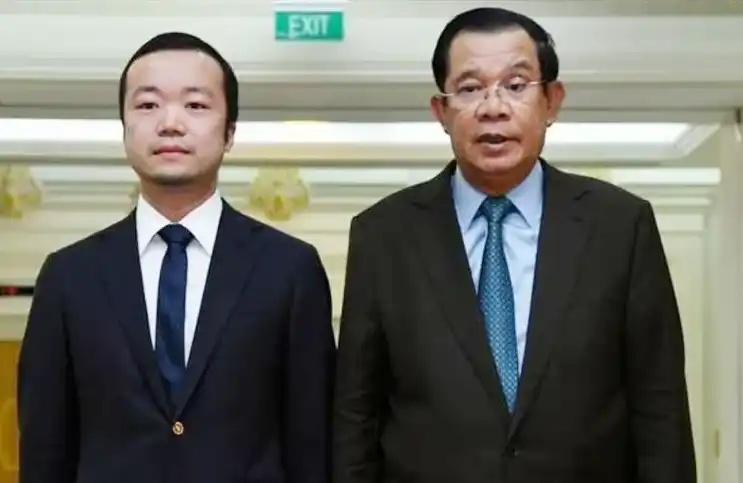How Web3 enables fans to become new creators?
Original title: "Fans are the New Creators"
Original author: Li jin
Original compilation: Shaun @DAOrayaki.org
One of the most important trends in Web3 is the reimagining of circles: the blurring of lines between viewers/fans and creators, and how fan labor is funded and rewarded.
Two major shifts are demonstrating this trend:
The gap between fans and creators is closing. Fans can exert significant influence and even co-create original work (questioning what "original" even means);
Fans are adopting new business models and funding sources to Create spin-off projects that didn't exist before
The end result is an expansion of creativity on the Internet with greater access, financial Strengths, collaboration and fulfillment.
From Canon to "Fanon"
The difference between fans and creators in web3 The correlation in is weakening. Fans are creating spinoffs that are as widely recognized as the originals, and even officially recognized classics. Integral to this is the recognition that fans can add value to the creative process, and creators license the work from the start to allow derivative use (often choosing a CC0 or “no rights reserved” license). This is consistent with the future of the creator economy being one of the themes of the community economy, where co-creation is driven and rewarded through shared ownership.
Let's analyze some cases that are happening:
Shibuya is an animated film funded through the sale of NFT Producer Pass. NFT holders can vote and influence the plot of subsequent chapters of the movie, earning tokens representing their share of the final movie. The tight integration of fan feedback into the creative process weakens the distinction between fans and creators.
Another example is Jenkins the Valet, a boring ape NFT named and conceived by its owner, Tally Labs. The whole character of Jenkins could be considered an extended fan fiction - but it has become so prominent that it was signed by CAA. Shared IP ownership leads to a new creative world for BAYC's single spinoff.
BAYC holders' unlimited commercial rights to the NFTs they own is critical for characters to be able - and motivated - to create derivative works with great success . This is a major shift from the traditional world of fan fiction, where there is a clear line between fan works and original works, which are largely viewed as unsanctioned (and sometimes undesirable) originals .
Now, Tally Labs is working on a longer novel starring the expanded Boring Ape universe, in which ape/mutant ape holders can submit their The characters' stories and influence the plot, earning 50% of the net profit from the book. A key to unlocking profit sharing is that NFT holders license their IP to Tally to appear in the book, effectively tying fans to the work.

Copyright 2022 Tally Labs, all rights reserved
There is also a metaverse project called Azurbala on their roadmap that will spawn more characters. Even before the project launched, community members built lore and characters in Azurbala, influencing the project's official roadmap and story -- an example of fan fiction that folds together the meaning of original author and fan.
A new business model for fan creation
Due to the provisions of copyright law, fan works are in the currency Culturalization has historically been in a legal gray area. Since they use the content and characters of copyrighted works, most fan fiction creators are classified as amateur creators with no business model. Various initiatives have attempted to address this problem -- such as Amazon's Kindle Worlds -- but each has its own limitations.
In web3's creative projects, basic ownership of tokens provides fans with an inherent business model and incentivizes the creation of derivatives. In contrast to web2 where fans work for free, in web3 fan owners gain access to the success of their labor through tokens: as the digitally scarce thing held becomes more well-known, its value increases. For example, by disseminating Jenkins the Valet through additional media items, the price of Jenkins NFT (and other NFTs in the BAYC universe) will increase, allowing fans and original creators to obtain value.
We also see this happening in the broader social token space and other NFT categories such as music, where ownership of tokens incentivizes fans to move from Passive consumers become active participants and evangelists.
Cultivate shared advantages
In terms of fan funding, projects with national treasury can fund fan works , to further promote the growth of its IP. Nouns' 27K ETH fund (over $45 million) was built through the sale of more than 400 NFTs over a year, and is essentially a Nouns-focused fund dedicated to spreading projects in the Nouns-related IP space.
Source: Nouns.wtf
It's as if J.K. Rowling takes a portion of her earnings to fund fan fiction authors who use her characters -- something unheard of in the world of traditional media. The theory is that the underlying scarcity of the original collection of NFTs could allow it to gain value as its character universe grows in recognition and popularity.
Conclusion
In conclusion, new web3 creative projects are disrupting media creation models: owner Communities are forming around nascent creations who combine their stories with spin-off ventures and distribute them to communities with shared strengths and then to wider audiences. Fans become creators, and fans of fans become creators, resulting in a prismatic creative portfolio, all powered by native business models and new financing mechanisms. The end result is the democratization of storytelling and creativity for everyone.
Original link
Welcome to join the official BlockBeats community:
Telegram Subscription Group: https://t.me/theblockbeats
Telegram Discussion Group: https://t.me/BlockBeats_App
Official Twitter Account: https://twitter.com/BlockBeatsAsia


 Forum
Forum Finance
Finance
 Specials
Specials
 On-chain Eco
On-chain Eco
 Entry
Entry
 Podcasts
Podcasts
 Activities
Activities
 OPRR
OPRR








